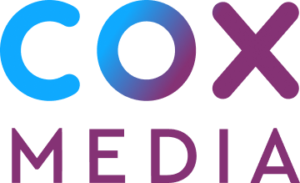Advertising for Government Agencies: 4 Tips for Success
From public health campaigns to tourism advertising, state and other local government agencies depend on ad campaigns as a critical channel for communicating with the public and raising awareness about important safety procedures, support resources, and other information that may affect residents.
In 2020, these ad campaigns are heavily focused on dispensing important information related to the pandemic, including updated safety protocols, ongoing local restrictions, vaccination resources, and other key public health updates. At the same time, these government agencies are also making plans to roll out new public health updates covering subjects ranging from in-person K-12 education, to tourism opportunities that support the local economy.
If you work for a government agency tasked with enabling clear, consistent communication with citizens, you probably know that the old playbook for running public awareness campaigns isn’t always adequate to these current needs. Here’s a look at some tips to improve your ad strategy as a government agency—including the value of building and launching campaigns with the help of a proven digital partner.
1. Be Transparent About Your Decision-Making
In an era where misinformation can spread like wildfire, consistent lines of communication are key. So, too, is being transparent about the decisions your government agencies are making—especially if you expect blowback from certain segments of the local population.
By using both traditional and digital advertising channels to make your messaging easily visible and accessible to your audience, your government agency can succeed in keeping citizens informed of public health updates and other important information. From live-streamed press conferences to public health campaigns that share safety guidance across cable TV, digital video and digital audio, your agency can target all segments of your local population to make sure your messaging is being heard.
2. Offer Empathy and Support to Your Citizens
The restrictions and sacrifices faced by pandemic-era citizens is significant. From child care headaches to losses of income to restricted summer travel opportunities, government agencies have spent more than a year asking citizens to continue making sacrifices for the greater good.
While many of those citizens may be supportive of these efforts, it doesn’t save them from the strain of ongoing restrictions. With vaccine progress advancing each day and a return to normalcy drawing near, government agencies are eager to avoid any backward steps caused by flagging commitment to public health.
One way to address this concern? Craft messaging that acknowledges the sacrifices being made, and validates the feelings of frustration and despair that your citizens may be suffering. Highlight potential government-sponsored resources that may offer assistance to specific struggles citizens may be facing. Digital ad campaigns can target local residents based on demographic or behavioral data that may be highly correlated to specific types of struggle, such as lost income or mental health struggles. Based on this criteria, government agencies can use these ad channels to present resources that may offer some relief.
3. Encourage “Staycations” in 2021
The pandemic’s impact isn’t only hitting hard at the household level. City and state economies are suffering from drastically reduced consumer activity, especially in sectors such as tourism, restaurants, and entertainment.
Surveys of American consumers have found that while Americans are antsy to travel, they aren’t necessarily returning to their old forms of travel right away. While half of Americans surveyed said they’re eager to travel in the near future, 44 percent of those travelers are only considering domestic destinations. Another 38 percent are looking for travel destinations that make it easy to avoid large crowds.
Local governments can capitalize on these trends by building local tourism campaigns that focus on “staycations” – or attracting visitors from a drivable distance in 2021. This isn’t just a strategy that improves the morale and travel options of its residents: It can also infuse local economies with a boost of expendable income. This presents an opportunity for governments to generate additional tax revenue, and financial support for local businesses, through a well-designed tourism campaign.
4. Strike a Positive Tone When Looking to the Future
As vaccination rates increase and government restrictions start to relax, state and local residents are likely eager to make a return to “normal” living—and government agencies can participate in that planning process. By now, many governments have the information they need to project when new phases of vaccine rollout will occur, and they can offer general estimates of when new phases of recovery—from reduced travel restrictions to large events—will be able to be resumed.
As part of supporting citizens and helping them embrace these final stages of pandemic restrictions, governments should release and update timelines that help citizens see the larger picture, make plans for future events such as vacations and weddings, and make it more likely that citizens will buy in to today’s public health plans in exchange for their optimism about the months ahead.
Government agencies depend on advertising and marketing to spread awareness for various initiatives, and to stay in communication with local communities for public health and other types of campaigns. Don’t let an inefficient ad campaign sabotage your efforts at serving your constituents—connect with a digital partner and start building an effective ad strategy today.
Connect with a Marketing Expert
Share Post On Social
Related Insights
Connect With Your Local Marketing Expert
You know your business. We know advertising. Together, we can bring your business to more people. Contact a member of our team today. We’d love to help you grow.

